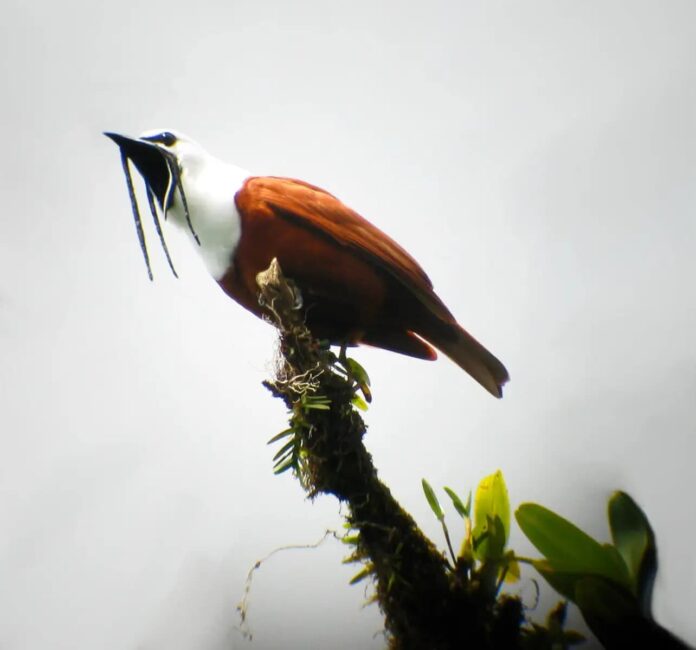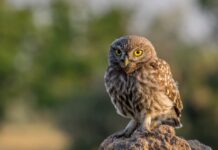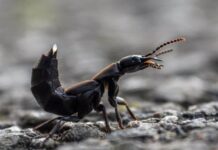The three-wattled bellbird is definitely the unique bird that you don’t come across every day. A wattle is a fleshy wrinkled skin that hangs from the neck or throat of some birds and lizards. An example of that is the wattles on a rooster’s head and neck. However, things are quite different when it comes to the three-wattled bellbirds and the name says it all. Want to find out more? Check out the details below.
1Appearance
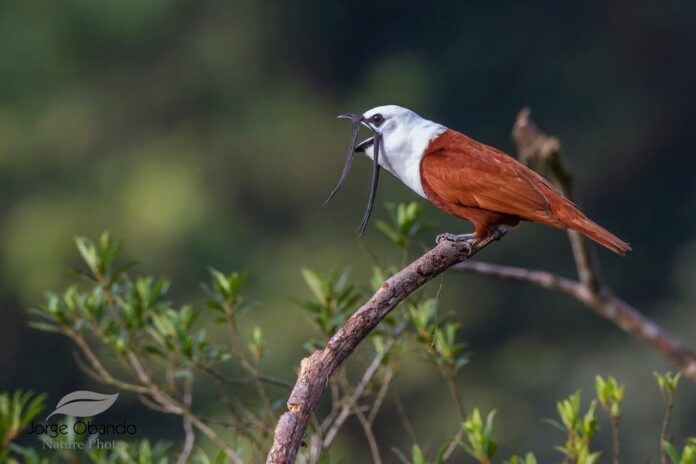
A three-wattled bellbird is the only bird with such a peculiar yet striking appearance that you won’t mistake it for something else. An adult grows to between 25 to 30 centimeters long, and the males are brighter than the females. Male three-wattled bellbirds have a white head and throat while the remaining plumage is chestnut brown. Meanwhile, the females have an olive plumage with yellowish streaks on her underpart and she has no wattles. The name of this bird comes from the male’s wattles of skin that hang from the base of the bill. These wattles can be as long as 10 centimeters when the males extend them during interactions and songs. The songs are so loud they can reach up to 100 decibels, that’s the forest’s rock star right there.
2Behavior
Naturally, the three-wattled bellbirds are secretive and shy but the males have a loud and distinctive call that sounds like a bell. The combination of these traits results in them being heard more than seen. The mating ritual is one of the unique things that these bellbirds possess, rather sneaky. A male three-wattled bellbird quietly approaches a perching female from behind. As he is doing so, he opens his mouth a full 180 degrees to make his distinctive “bonk” sound in her ear. This will knock the female off of her branch, and that’s how he gets the girl. They repeat this until the courtship begins and then the female will leave to build her nest and raise the chicks alone. Females do have weird kinks, huh?
3Feeding & Habitats
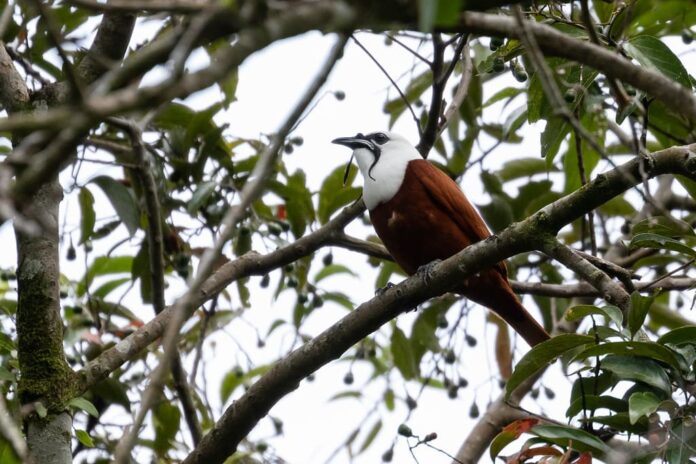
Such a unique bird definitely has a limited range, and they only breed in the mountainous regions of Costa Rica. Their usual range is from Western Honduras south to Eastern Panama, living in foothills and lowland forests. Thanks to their large gape, these birds can easily feed on large fruits but they also eat berries. Unfortunately, clearance for agriculture and habitat destruction is causing the population of the birds to decrease rapidly. Now three-wattled bellbirds are classified as “Vulnerable” on the IUCN Red List.
Related Post: The Strange-Feet American Coot

